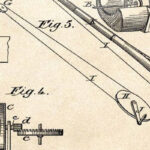by Simone Billi
I visited the ITER hydrogen fusion research center in Cadarache (Marseille). This is an international project under construction by an international consortium consisting of the European Union, Russia, China, Japan, United States of America, India, South Korea. The aim is to build a hydrogen fusion reactor to generate electricity.
This process involves fusing two hydrogen atoms together to generate energy. It needs very high temperatures: about 150 million degrees centigrade. Considering that the melting temperature of metals is about 1,200 degrees, you understand the technological challenge. To achieve this fusion, a hydrogen gas is suspended in an intense magnetic field generating a plasma due to very high pressure and temperature. The plasma is still heated up to 150 million degrees until the atoms' nuclei fuse together, producing energy in the form of heat. The heat can be used to produce steam and generate electricity through a turbine.
The physical principle of fusion is the same one that powers stars and our Sun. This fusion produces 4 million times more energy than a traditional source like coal. For example, the amount of energy produced in a year by a coal-fired power plant of 1,000 MW, which can supply a city of 500,000 inhabitants, is equivalent to 250 kg of fusion hydrogen.
Hydrogen can be extracted from water, so it is virtually inexhaustible. In the event of an accident, the plant would shut itself down. This combustion produces no greenhouse gases, radioactive waste or plutonium, eliminating the problem of waste storage.
The technological innovations involved in the project are diverse: cryogenics, superconductors, high vacuum, materials, anti-seismic systems, precision mechanics. The impact on industry and technological innovation is enormous, as well as the direct repercussions on civil society: for example, the cost of new superconductors for MRIs has been reduced by a factor of 10 times. This technology, once made industrially applicable, would represent a revolution for the entire humanity, since it would be possible to produce electric energy with unlimited fuel and intrinsic safety, on a large scale and without production of pollutants or radiative waste.
In numbers, the Italian contribution to the ITER research center is now around € 900 million, while the orders for Italian companies have been, since the beginning of the project, about € 1.8 billion.
(I thank for the hospitality at ITER Eisuke Tada, Acting Director General, Sergio Orlandi, Plant Engineering and Construction Department Head, Mario Merola, Engineering Department Head, Federico Fortunato, Electrical Systems Installation. I would like to thank for their participation and speeches Roberto Adinolfi, President and CEO Ansaldo Nucleare, Davide Malacalza, President ASG Ansaldo Superconductors, Mattia Malacalza, Stakeholder Group Ansaldo Superconductors, Fabio Dalla Serra, President and CEO Cestaro Rossi, Andrea Gemignani, Commercial Director Cestaro Rossi, Carmine Pierni, CEO Monsud, Emanuele Colantuoni, Project Director Monsud, Vincenzo D'Ingianti, Project Director Fincantieri, Paolo Delfino, General Manager Vernazza, Ersilia Ingratta, Commercial Director Leonardo).
Congressman elected to the Chamber of Deputies in the Foreign - Europe Circumscription. Group leader of Lega in the Foreign Affairs Committee and chairman of the Committee for Italians in the World. He holds a degree in industrial engineering and is an executive in the intellectual property sector.









Scrivi un commento